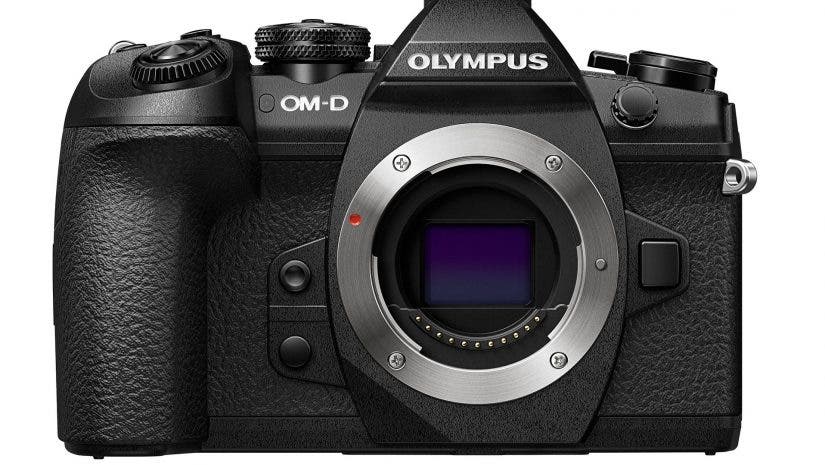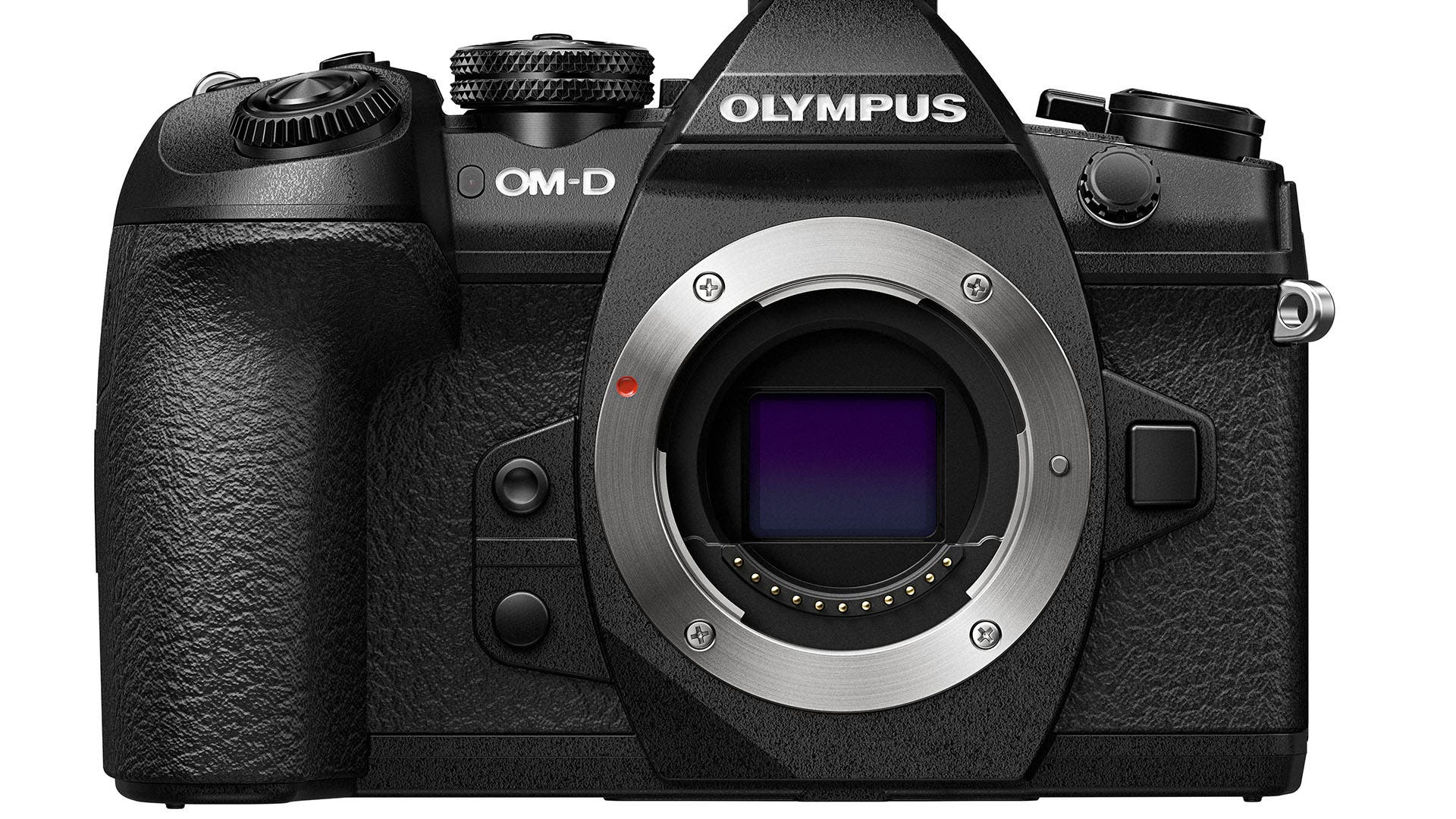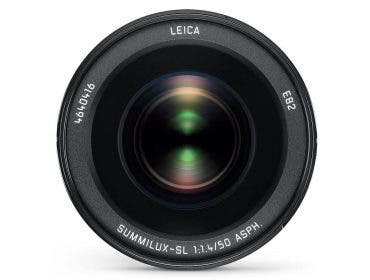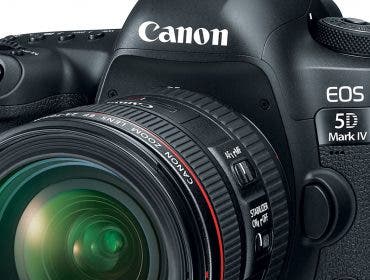Olympus today released the second generation of its flagship mirrorless interchangeable-lens camera, the OM-D E-M1 Mark II, featuring significant improvement in performance, construction and autofocus accuracy. Along with the OM-D E-M1 Mark II, Olympus today also announced several new accessories designed to help owners get the most out of this camera. The accessories include a ruggedized powered grip, macro flash, release cable and underwater housing.
The Olympus OM-D E-M1 Mark II will be available in December at Adorama for body only but can be pre-ordered now. Orders will be filled on a first-come, first-served basis. Credit cards will not be charged until orders ship.
The camera, which was first announced in September at Photokina, is blazingly fast. It boasts higher photo and video resolution, more autofocus points, higher buffer capacity, 18fps in RAW, and a significantly faster EVF response rate. Small and light, the camera is positioned to attract both advanced amateurs and professional photographers.
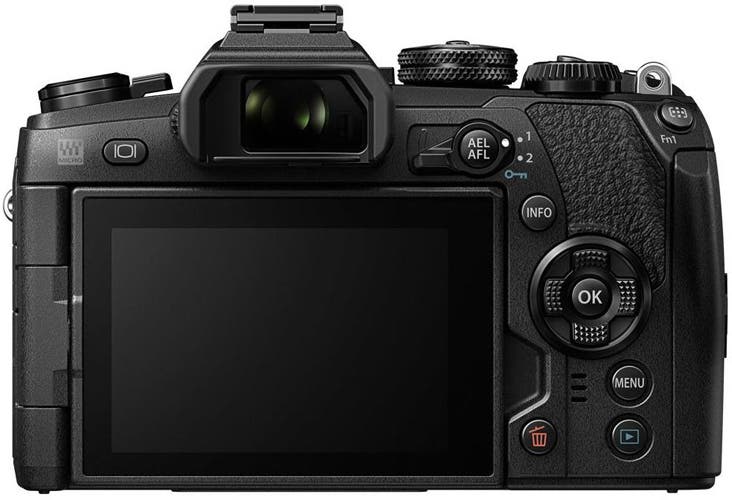
Olympus OM-D E-M1 Mark II Key Features
- 20MP Four Thirds sensor with 50MP High-Res Shot Mode
- 4K Video
- New TruePic VIII Dual Quad Core Image Processor
- 60fps sequential shooting is world’s fastest
- 121 Cross-type on-chip phase-detect AF points
- Up to 5.5 steps of image stabilization
- 2.35M dot EVF with 120 fps refresh rate, 5 millisecond response
- New Cluster Display Subject Tracking
- Dual memory card slots
- Weatherproof magnesium alloy body
Changes from original E-M1
How does the OM-D E-M1 Mark II stack up against its predecessor? Funny you should ask…
Focusing: The OM-D E-M 1 Mark II has 121 point all cross-type on-chip Phase detection AF points, up from 37 points on the older model, which was based on a hybrid AF system. The Mark II is all Phase Detection AF and the camera’s ability to track and sequentially shoot moving subjects has been greatly improved.
Burst Mode: Doubled from 9 to 18 fps, thanks to an electronic shutter.
Image Stabilization has been improved from 4 to 5.5 steps.
The EVF has become more responsive, with a 120fps minimum frame rate, up from 60fps, and a 5 msec minimum display time lag, down from 16 msec.
Video resolution has been improved from full HD at 30p to 4k at 60p.
The Mark II has dual card slots (the older model had one) and USB has been modernized from 2.0 to 3.0.
Other improvements include a top normal ISO of 6400 and expanded ISO range of 64-25,600, an electronic shutter speed that goes up to 1/32000 sec, new movie shooting functions, a faster f/250 sec flash sync speed, and the addition of Preset Manual Focus, AF Home settings, a Lowest Shutter Speed setting, change of grid color for viewing darker scenes, and AF scan mode.
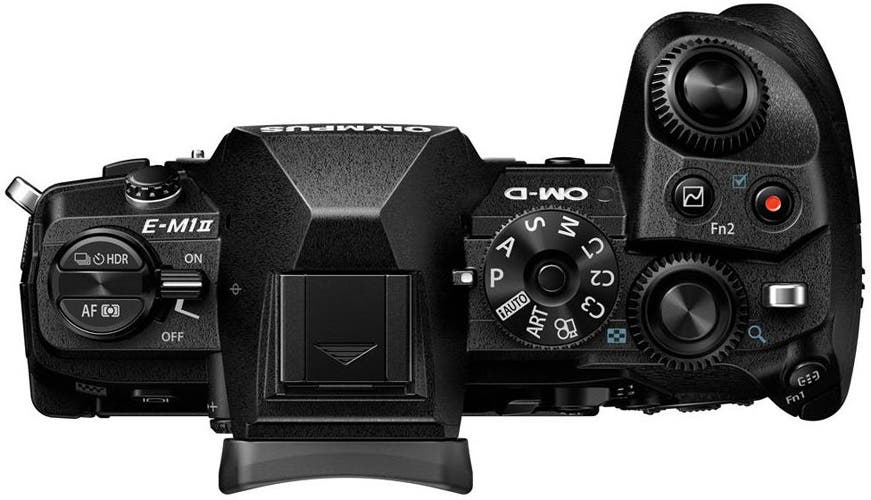
Viewfinder
The EVF is a high-magnification (1.48x), high-resolution variety that is said to rival full-frame DSLRs in brightness and magnification. It 2.360 million dot resolution and a 128fps frame rate for nearly flicker-free performance. The camera also has a 1.037 million dot resolution, 3-inch articulated LCD monitor
Other features include a Pro Capture Mode, which Olympus says is lag-free; a 50MP High Res Shot Mode, in-body, 5-Axis Image Stabilization which seems to be all the rage this year; Olympus claims 5.5 stops of shake compensation—and an incredible 6.5 stops when used with the newly announced M.Zuiko Digital ED 12-100mm f/4 IS PRO. The camera offers a Silent mode when shooting with the electronic shutter, as well as focus stacking and focus bracketing. Live Composite and Live Bulb modes, keystone compensation, and tethered shooting using Olympus Capture software is also available.
Image Quality
According to Olympus, the new 20.4 megapixel Live MOS sensor will offer 25% higher resolution than the predecessor model, and the absence of a low-pass filter further enhances image quality. A higher dynamic range will improve the reproduction of highlight and shadow detail, and an anti-reflective coating on both sides of the sealing glass over the sensor will further enhance contrast performance. The normal sensitivity ISO (ISO AUTO) range will be expanded to ISO 6400. The ISO LOW setting will be equivalent to ISO 64, providing greater flexibility to shoot at wider apertures even in brightly-lit situations.
A High Res Shot Mode will utilize the Voice Coil Motor (VCM) system of the 5-Axis Image Stabilization System to precisely shift the sensor in half pixel increments while capturing eight shots in rapid succession. The camera will then automatically composite the shots into a single 50-megapixel equivalent ultra-high resolution image. This unique Olympus technology is well-suited for still life photography or any other photos that require ultra-fine detail reproduction.
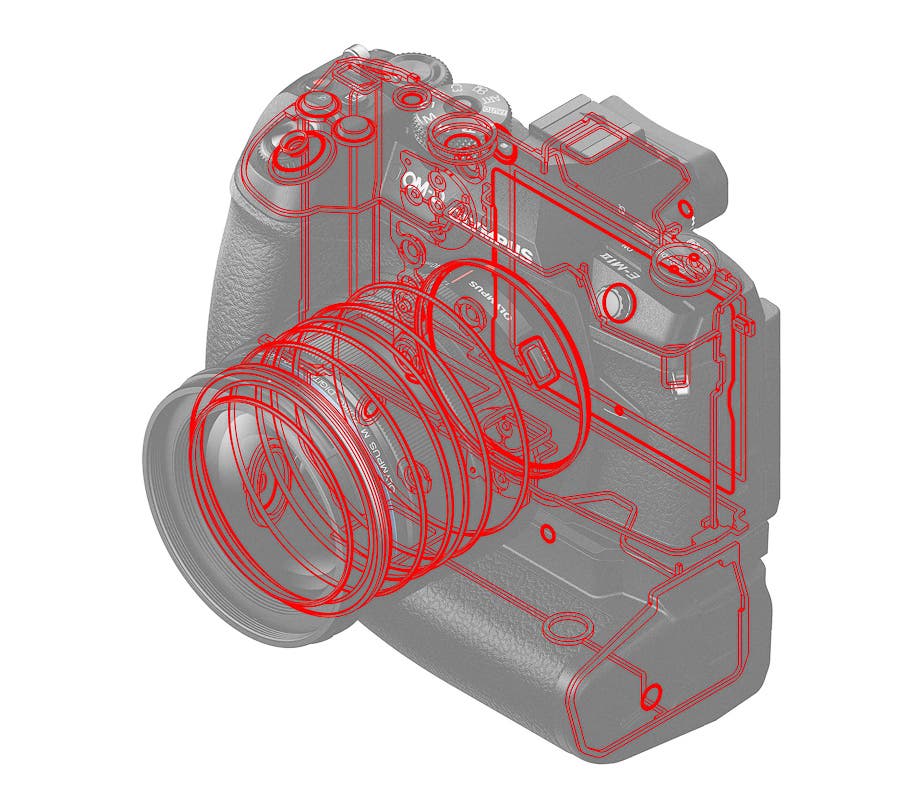
Digital Cinema Standard 4K videos
The OM-D E-M1 Mark II will support Digital Cinema Standard 4K (4096 x 2060 pixels) video capture at a 24P frame rate and a bit rate of up to 237 Mbps for movie production. The 20.4 megapixel Live MOS sensor will provide a read speed three times faster than that of the original E-M1 for effective suppression of movement distortion, resulting in sharp, clear image quality. The video-specific picture mode “Flat” will be ideal for color grading.
The 5-Axis image stabilization is said to reduce camera shake for video to the point where 4K video capture is possible handheld. The HDMI monitor connection will provide the ability to view live video output live on a larger display while shooting. Users will be able to select from Monitor Mode for an external monitor and Recording Mode to capture uncompressed video directly from the HDMI port.
The Olympus OM-D E-M1 Mark II will be available in December, body only for at Adorama.
Accessories
Here’s a quick look at the line of accessories Olympus has announced for the OM-D EM-1 Mark II.
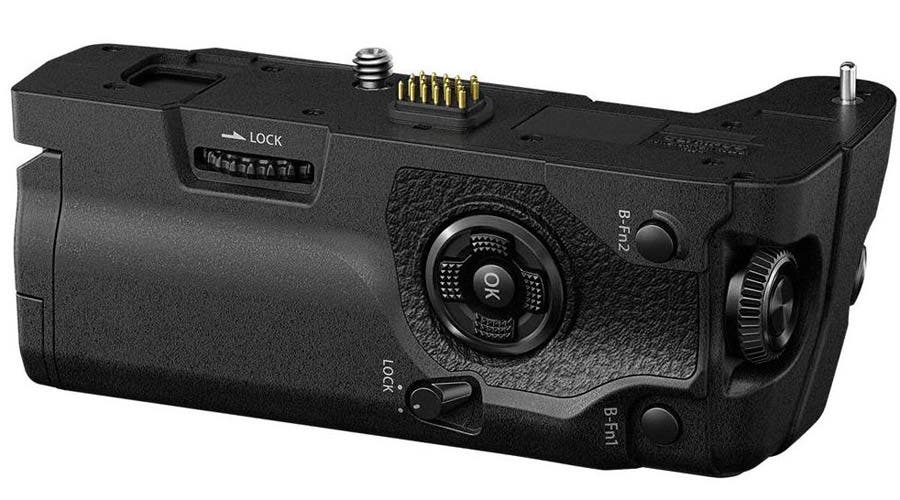
HLD-9 Battery Grip (): This dustproof, splashproof, and freezeproof powered grip is designed for the Olympus OM-D E-M1 Mark II camera. With the HLD-9, photographers have the power of one BLH-1 lithium-ion rechargeable battery in the camera body and a second one in the HLD-9 grip. It is equipped with a directional arrow pad, two control dials, two function buttons, and shutter release for vertical and horizontal use.
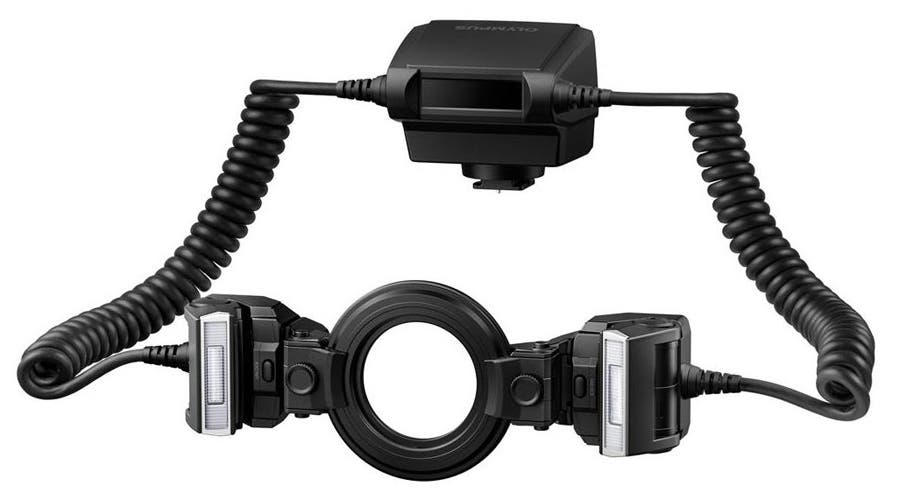
Macro Flash STF-8 (): This is the world’s first dustproof, splashproof and freezeproof macro flash. When combined with the Olympus OM-D E-M1 Mark II, Focus Stacking and Focus Bracketing modes are supported for flash photography, useful for capturing flowers, insects and commercial photos in the studio. The bundled adapter ring is compatible with the M.Zuiko Digital ED 30mm f3.5 Macro lens, M.Zuiko Digital ED 60mm f2.8 Macro lens, and M.Zuiko Digital ED 12–40mm f2.8 PRO lens. When using both flash heads the GN is 8.5m, and the flash head angle is adjustable from -60 to 40 degrees.
Cable Release RM-CB2 (): Cable release with pin jack terminal has bulb lock for long exposures.
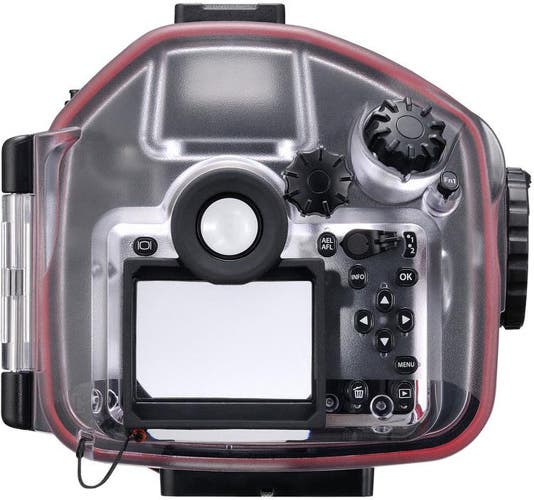
Underwater Housing PT-EP14 (): Underwater housing to 60 meters depth, can accommodate M.Zuiko Digital ED 60mm f2.8 Macro lens and M.Zuiko Digital ED 30mm f3.5 Macro lens.
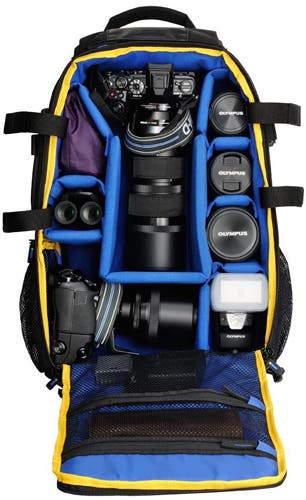
System Backpack CBG-1 (): Camera backpack designed to store the complete OM-D system with room for extras, and 18 partitions included.
